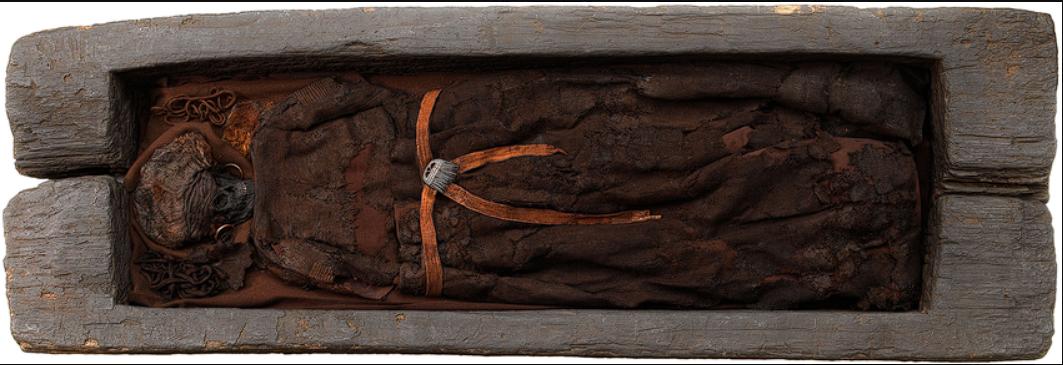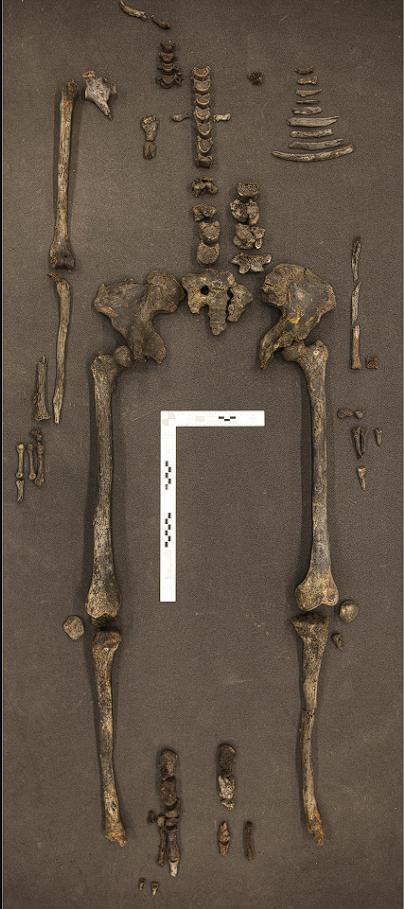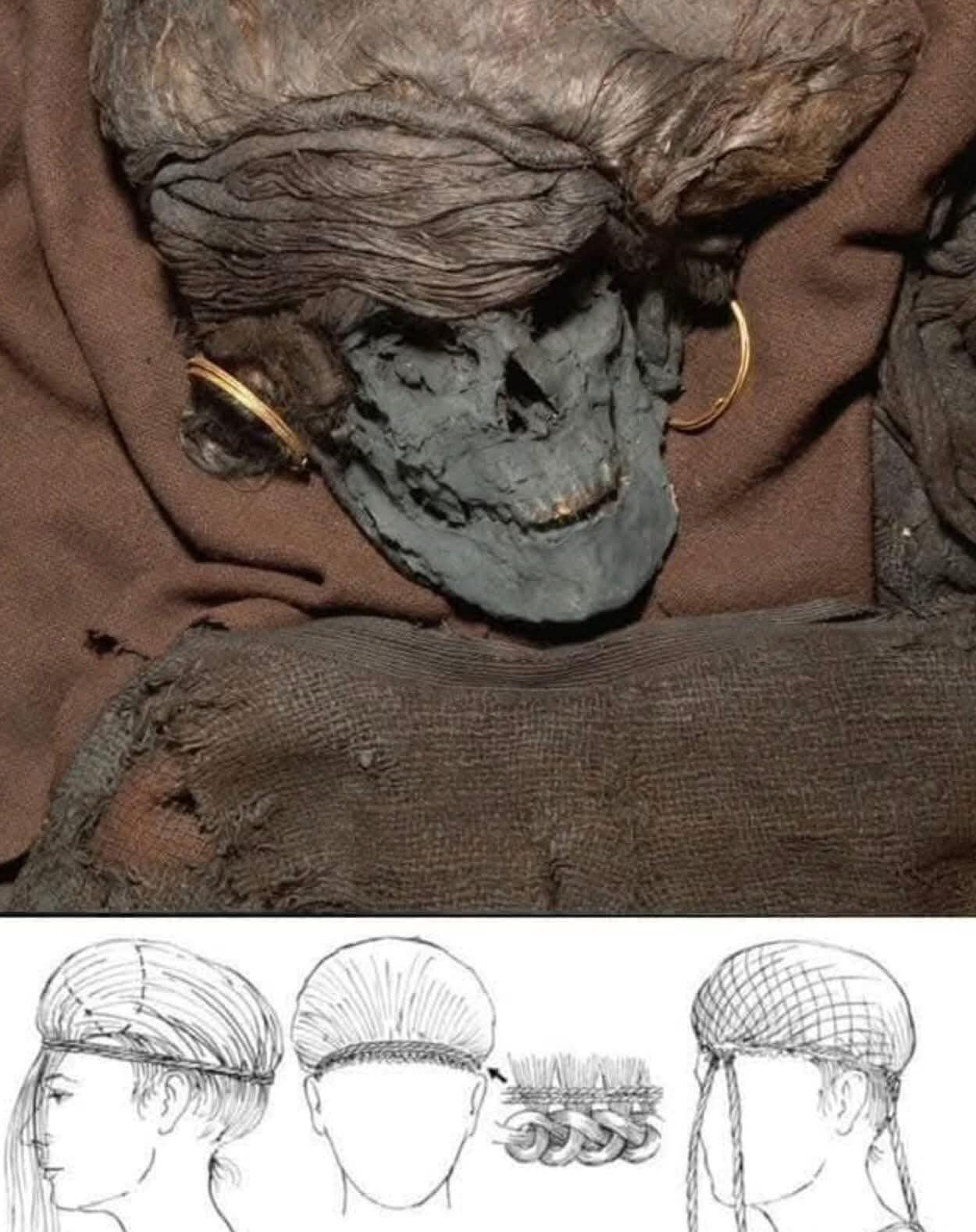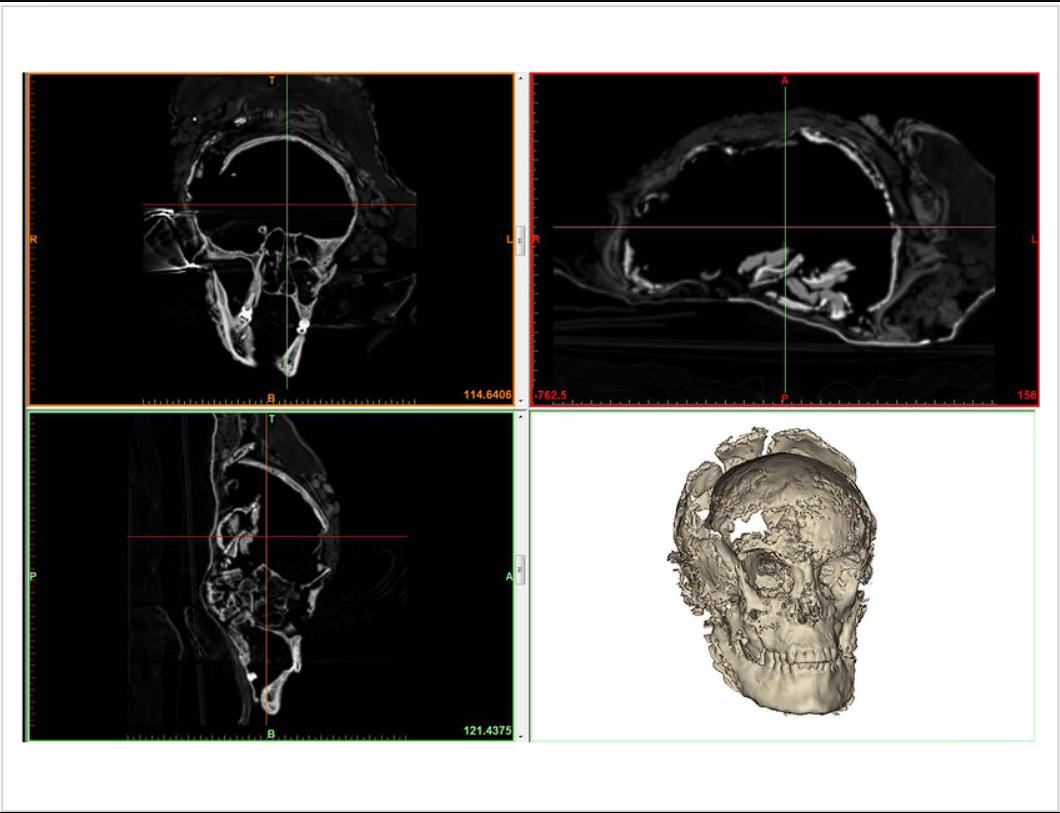The Skrydstrup Woman, unearthed from a burial mound in southern Denmark in 1935, provides an extraordinary glimpse into the sophisticated society of the Nordic Bronze Age. Her remarkably preserved remains and opulent attire offer invaluable insights into the social hierarchy, artistry, and cultural networks of her time.
Unearthing the Skrydstrup Woman: A Window to the Bronze Age
The discovery of the Skrydstrup Woman in 1935 opened a window into the lives of elite individuals during the Nordic Bronze Age, revealing a society of remarkable sophistication.
Archaeological Discovery
The 1935 excavation of a burial mound near Vojens, Denmark, revealed the remains of the Skrydstrup Woman, an individual of high status from the Bronze Age.

- Burial Mound Excavation:
- The excavation of the burial mound provided crucial archaeological evidence, allowing researchers to reconstruct the life and times of the Skrydstrup Woman.
- It was a burial mound excavation.
- Vojens, Denmark Location:
- The location near Vojens, in southern Denmark, is significant, highlighting the region’s importance during the Bronze Age.
- It was located in Vojens, Denmark.
- Rare Glimpse:
- The discovery offered a rare glimpse into the lives of Bronze Age elites, providing tangible evidence of their social status and cultural practices.
- It was a rare glimpse.
Dating and Age
Radiocarbon dating placed her death between 1382 and 1129 BC, and she was estimated to be around 18 or 19 years old at the time of her death.

- Radiocarbon Dating:
- Radiocarbon dating provided a precise timeframe for her death, allowing researchers to place her within the chronology of the Bronze Age.
- It was radiocarbon dating.
- Bronze Age Period:
- The dating confirms her life during the Bronze Age, a period marked by significant social and technological developments.
- It was during the Bronze Age period.
- Young Age at Death:
- Her young age at death highlights the fragility of life in prehistoric times and underscores the importance of her burial as a marker of high status.
- She had a young age at death.
High Status Burial
Her burial attire and elaborate hairstyle spoke to her high status, indicating her importance within the Bronze Age society.
- Elaborate Attire:
- The elaborate attire, including finely embroidered woolen garments and gold jewelry, reflected her elite standing and social importance.
- She had elaborate attire.
- Symbol of Prestige:
- The carefully arranged burial, complete with valuable artifacts, served as a powerful symbol of prestige and authority.
- It was a symbol of prestige.
- Social Hierarchy:
- The burial highlighted the existence of a well-defined social hierarchy during the Bronze Age, with individuals like the Skrydstrup Woman occupying positions of power.
- It highlighted social hierarchy.
Attire and Adornments: Symbols of Elite Status
The Skrydstrup Woman’s attire and adornments provide valuable insights into the fashion and social customs of the Bronze Age.
Woolen Clothing
She wore a finely embroidered short-sleeved woolen blouse and a large square woolen cloth, showcasing the advanced textile skills of the period.

- Finely Embroidered Blouse:
- The finely embroidered woolen blouse demonstrated the craftsmanship and artistic skill of Bronze Age weavers.
- She had a finely embroidered blouse.
- Square Woolen Cloth:
- The large square woolen cloth, draped from her waist to her feet, highlighted the importance of textiles in signaling social status.
- She had a square woolen cloth.
- Textile Skills:
- The sophisticated textile techniques used in her clothing reflected the advanced craftsmanship of Bronze Age artisans.
- They showed textile skills.
Gold and Adornments
She adorned 24-karat gold spiral earrings and a horn comb, further emphasizing her elite standing and access to valuable materials.
- 24-Karat Gold Earrings:
- The 24-karat gold spiral earrings were a striking symbol of wealth and prestige, highlighting her access to valuable resources.
- She had 24-karat gold earrings.
- Horn Comb:
- The delicately crafted horn comb, fastened to her belt, reflected the attention to detail and personal adornment in Bronze Age society.
- She had a horn comb.
- Elite Standing:
- These adornments collectively reinforced her elite standing, showcasing her access to luxury items and high-quality craftsmanship.
- She had elite standing.
Elaborate Hairstyle
Her ash-blonde hair, styled into an elaborate arrangement and covered by an intricately woven hair net, reflected the importance of appearance in signaling status.

- Ash-Blonde Hair Arrangement:
- The elaborate hairstyle, requiring hours to complete, demonstrated the importance of personal grooming and presentation in Bronze Age society.
- She had an ash-blonde hair arrangement.
- Sprang Technique Hair Net:
- The intricately woven hair net, made using the sprang technique with unbraided horsehair, highlighted the advanced textile skills of the period.
- She had a sprang technique hair net.
- Woolen Cord Securing:
- The five-meter-long woolen cord, wrapped multiple times around her head, secured the hair net and added to the complexity of her hairstyle.
- She had woolen cord securing.
Origins and Cultural Networks
Isotope analysis and archaeological findings suggest the Skrydstrup Woman’s foreign origins and the extensive cultural networks of the Nordic Bronze Age.
Foreign Origins
Isotope analysis revealed that she was not originally from Denmark, likely coming from regions corresponding to present-day Czech Republic, Germany, France, or Sweden.
- Isotope Analysis:
- Isotope analysis provided scientific evidence of her foreign origins, challenging assumptions about the homogeneity of Bronze Age populations.
- It was isotope analysis.
- Cross-Cultural Interactions:
- Her foreign origins highlighted the significant mobility and cross-cultural interactions of the Nordic Bronze Age, emphasizing the interconnectedness of prehistoric Europe.
- They had cross-cultural interactions.
- Mobility of Women:
- Her presence in Denmark suggested the mobility of women in prehistoric Europe, possibly through strategic alliances or marriage arrangements.
- They showed mobility of women.
Strategic Alliance or Marriage
It is believed she arrived in the Skrydstrup region around the age of 13 or 14 and remained there until her death, possibly as part of a strategic alliance or marriage arrangement.
- Early Arrival:
- Her early arrival in the region suggested a deliberate move, possibly to establish political or social ties.
- She had an early arrival.
- Political or Social Ties:
- The possibility of a strategic alliance or marriage arrangement underscored the importance of such connections in Bronze Age society.
- They had political or social ties.
- Integration into Society:
- Her integration into the Skrydstrup region highlighted the ability of individuals to move between communities and establish new lives.
- She had integration into society.
Center of Power and Influence
The discovery of large longhouses and valuable artifacts near her burial site suggests that the area was a center of power and influence during the Bronze Age.
- Large Longhouses:
- The large longhouses, including the 500 square meter structure, indicated the presence of a substantial and organized community.
- They had large longhouses.
- Valuable Artifacts:
- The presence of valuable artifacts such as bronze and gold reinforced the notion that the area was a hub of wealth and power.
- They had valuable artifacts.
- Social and Economic Importance:
- The findings collectively highlighted the social and economic importance of the Skrydstrup region during the Bronze Age.
- They showed social and economic importance.
The Skrydstrup Woman’s remarkably preserved remains offer a profound understanding of the Nordic Bronze Age. Her luxurious attire, intricate hairstyle, and foreign origins challenge long-held assumptions about prehistoric Europe, revealing a society of sophistication, mobility, and cultural exchange. Her story continues to captivate researchers, providing valuable insights into the lives of elite figures who shaped this pivotal period.

CÁC TIN KHÁC
Mary Walton: The Forgotten Inventor Who Helped Clean Up America’s Cities
Tomb of Queen Nefertari in the Valley of the Queens, Egypt
Discover the Hypostyle Hall of the Temple of Hathor at Dendera
Venus de Losange: Unveiling the Mystery of a 20,000-Year-Old Paleolithic Icon